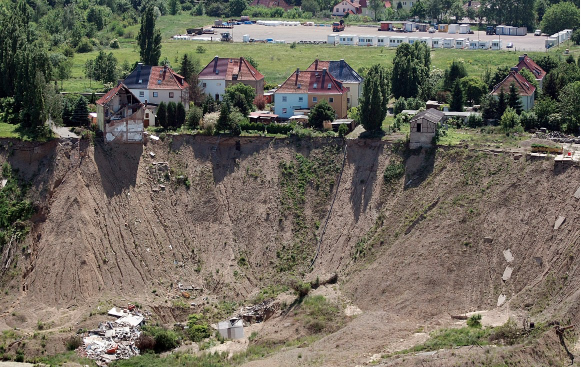 Researchers hope the SSSAFE model will be used worldwide to help early warning systems. Image: Getty Images
Researchers hope the SSSAFE model will be used worldwide to help early warning systems. Image: Getty Images
A mathematical model which can predict landslides that occur unexpectantly has been developed by two University of Melbourne scientists, with colleagues from GroundProbe-Orica and the University of Florence.
Professors Antoinette Tordesillas and Robin Batterham led the work over five years to develop and test the model SSSAFE (Spatiotemporal Slope Stability Analytics for Failure Estimation), which analyses slope stability over time to predict where and when a landslide or avalanche is likely to occur.
In a study published in Nature Scientific Reports, the research team was able to predict landslides, which often cause severe disruption, economic damage and deaths, of various sizes and speeds and in different environments.
“The key to the success of this model is that it works across a vast range of spatial or temporal scales and is informed by the physics of failure in soil and rock bodies,” said Professor Tordesillas.
“It can be used at a mine, where millimetre precision measurements of surface motion of a rock face are made every few minutes. And it can also be used in a rural area, where the only available data is a satellite radar image taken every few days to weeks.”
The SSSAFE model was initially developed for mine monitoring, where landslides are a constant threat, but using publicly available satellite data, the team was able to retrospectively predict the 2017 Xinmo landslide, which buried a township in China.
“For Xinmo, the model highlighted significant movement at what became the rock avalanche source, 10 months before the disaster occurred,” said Professor Tordesillas. “If we can use this model, along with freely available satellite data to recognise potential future landslide sites well before they happen, actions can be taken to protect communities, saving many lives.”
With SSSAFE exploiting big data analytics, network science and physics, Professor Tordesillas hopes her research will be used by industry and governments worldwide to help early warning systems (EWS) in mitigating landslide hazards in the face of climate change.
“Very few studies have used remote sensing data to detect precursors of slope failure. Crucially, little is known about how to interpret this data from known physics of granular failure to better understand and predict events leading to catastrophic landslides. We achieved both in SSSAFE.” she said.
















